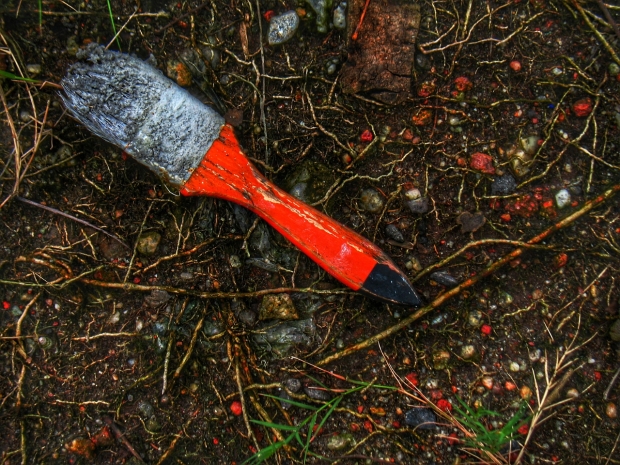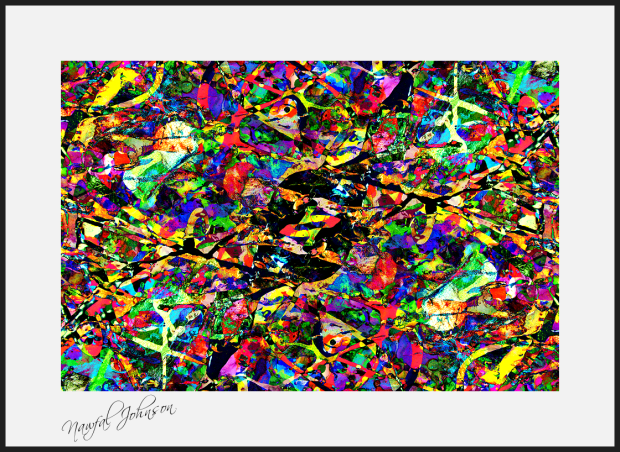There are more than 5 work strategies to get your stuff done, regarding your image processing; NEVERTHELESS, I want to list 5 recommendations I think about most and put into practice.
Series: THINGS MOST PEOPLE DO NOT PAY ANY ATTENTION TO.
IMAGE DESCRIPTION:
Title: White Paint Orange Brush.
Creation Date: 6 May 2016.
Copyright 2016 Nawfal Johnson.
All Rights Reserved.
☆ Art Print Sales’ Link:
http://www.imagekind.com/White-Paint-Orange-Brush_art?imid=f8c76506-d23f-4c2b-ae0f-96686e1a2750
1. DON’T PROCRASTINATE! Just get to the post-processing—don’t wait! Get to the new photos while they are still new and you are still excited about working on them. If the images are for a job, then working quickly is a necessity—you have a deadline! Also, if you delay the processing, you will likely be adding continuously to a backlog of photographs needing to be edited and designed. Having a backlog of photographs can cause unnecessary stress.
2. Edit, Edit, Edit! If you took 500 digital photographs during your latest photo-excursion, you already know NOT all are keepers. Some images may be so bad that you can delete those just by quickly looking at them on your camera LCD. For the second edit, view your images on a large screen and check for details—get rid of any images that are NOT high-quality and do not fit your purpose, or, images that you simply can’t visualize working creatively with now, or, at some point in the future. Of course, if you have unlimited hard drive space, you can save everything, but why make your image catalogue messy with so many unedited photographs.
3. Organization: Once you have edited-down your new images, you can get them organized. I move my digital images into folders by subject matter, e.g., abstract art, abstract trees, cat portraiture, etc. I find that early-organizing images by subject will drastically make things easier later on when it is time to copy or move the originals of a subject, and the processed art photos of that same subject, into an archiving solution. You can easily, then, just copy an entire folder to an archiving solution.
4. Know Your Photo-Editing Software: Find photo-editing software that you like, does all that you need, and that you can work with quickly and creatively. I have always preferred Paint Shop Pro over Photoshop: Perhaps both programs do roughly the same jobs, but I prefer the working nature of Paint Shop Pro. In my opinion, it is more user-friendly and it is more customizable than Photoshop. Photoshop is no doubt great software, but there are other options too, like Gimp, which is good, and free. The key is to choose something that works excellently for you, and that it is something you want to learn comprehensively to get the most out of it. Of course, it is best to get the photographs as good as possible in-camera so you DON’T need to spend a lot of time using editing software.
5. Practice What You Preach! You may already have a post-processing system that works well for you, and if that is the case, then stick with it. If your system is breaking down, then switch things up, maybe you can use some of the advice I have given. A good system, no matter what, should make your post-processing go smoothly, efficiently, and quickly. As important, your system should help you reduce stress and enjoy the work more—it should not do the opposite.
BONUS TIP:
STAY FOCUSED! There are many distractions out there to sidetrack your progress—fight against these urges. Each distraction will eat away at time, time that you can never get back. Thus, stay focused on your photography project and just get it done, and then you can take a break.



You must be logged in to post a comment.